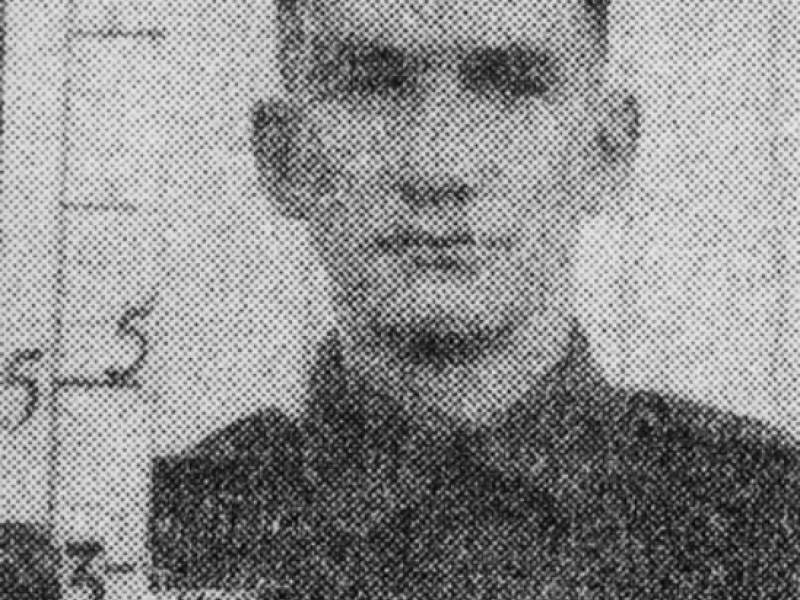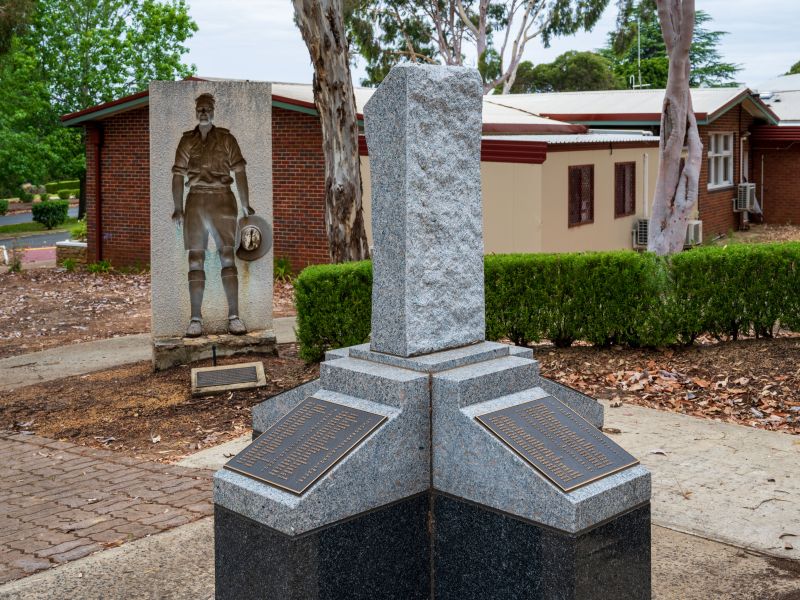Private Trevor Lloyd Ainsworth, No. 1 Company, Australian Army Service Corps
Trevor Ainsworth was born on 28 February 1921 in Katanning, Western Australia, to Frank and Gladys Ainsworth. His father had served with the light horse on Gallipoli and in France during the First World War, before being evacuated to Australia in August 1918 with illness. He married Gladys, a school teacher, upon his return.
Trevor, together with his sister, Pat, and brother, Rodney, was brought up on his parent’s farm at Boscabel. He attended Boscabel State School, where he was remembered as having “a bright and happy nature”. The family was well liked in the community, and was fondly farewelled when they moved to North Cottesloe in 1932.
After school, Ainsworth worked for paper merchants, Gordon and Gotch, as a packer. He joined the Militia on 14 October 1940, age 18, as a trooper with the 25th Light Horse Regiment.
On 16 April 1941, Ainsworth enlisted with the Second Australian Imperial Force, joining reinforcements to the 4th Reserve Motor Transport Company. He arrived in Malaya on 24 January 1942 where the 8th Division was already defending Malaya from the Japanese invasion.
On 14 February 1942, Commonwealth forces in Malaya were forced to surrender. Private Ainsworth was among the 45,000 British and Australian troops who became prisoners of war (POWs).
He was initially held at Changi POW camp but the Japanese soon called for working parties to build and expand new infrastructure. In July, Ainsworth volunteered with B Force which sailed for Borneo in July 1942. They had been assured of better food and conditions; instead 1,500 men found themselves crammed into the cargo holds of the Ubi Maru for 11 days before arriving at Sandakan.
Conditions at Sandakan soon devolved into some of the worst experienced by prisoners of the Japanese. Prisoners, including the sick, were forced at gunpoint to work on the construction of a military airstrip, and were often beaten. Illness and death ravaged the camp, and food was scarce. By January 1945, the prisoners were fending for themselves.
The completed airfield was soon destroyed by Allied aircraft bombing, and between January and March 1945, some 450 of the fittest prisoners were ordered to march west to Ranau, 260km away.
In May, a second wave of marches with 536 prisoners set out; only 183 arrived. Those who fell were left to die or were killed by the guards. Illness was often the official cause of death.
One of the fallen was Private Trevor Ainsworth. Records state that he died on 9 June 1945 from malaria.
Ainsworth family and friends grieved his loss. Memoriam notices were placed in the newspapers for years after he died. One was inserted alongside the couplet “His smiling face and happy ways will linger with us all our days.” Another read simply, “Vale, Trev.”
Ainsworth’s uncle, Corporal William Paterson, also served during the war, and died while a prisoner of war in Thailand.
Private Trevor Lloyd Ainsworth is commemorated at the Labuan Memorial in Malaysia.
Christina Zissis, Editor, Military History Section
- Australian War Memorial https://www.awm.gov.au/collection/AWM2021.1.1.80

 Australian War Memorial
Australian War Memorial